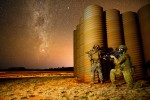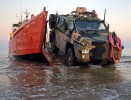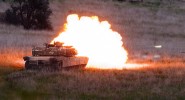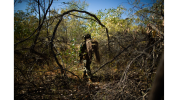Search
Using the filters to the left, click your selection, it will become bold and filter the results, click it again to remove that filter.
The focus of the Chief of Army (CA) Scholarships is to enable high preforming individual’s time to invest in academic research of immediate benefit to the Australian Army, both in a broad sense and those that specifically address future warfare and the State of the Australian Army Profession. The CA annually selects personnel to undertake research or professional development opportunities that will benefit Army from: research that broadly aligns with the Army Strategic Futures Agenda (ASFA) the …

The Australian Army Research Centre reviews and compiles systematic descriptions of books on land warfare topics, displayed here as separate Bibliographies. All Bibliography content can also be found through a search . Not listed here, are external bibliographies reviewed within parent Bibliographies. They will display in a search result, or within the parent Bibliography structure. … …
The Army continues to hold a special place in the hearts of Australians through sacrifice and long service to this nation. Although times and technologies have changed, the fundamental mission of the Australian Army endures: it is to win the land battle in order to defeat our enemies and safeguard the interests of the nation and the lives of our people. To carry out these operations effectively, the Army must be multi-skilled, flexible, adaptable, well trained and doctrinally prepared. Our skills must …
Army Futures Research Framework The Army Futures Research Framework (AFRF) describes the core research needs of the Australian Army in its contribution to Defence strategy. It supports Army’s ‘futures’ planning. The objective of the AFRF is to foster research outputs that shape and inform Army modernisation in order to build a more capable land force. The AFRF seeks to engage a wide audience, ignite thinking and rally intellectual capital to address Army’s most difficult transformational challenges. The …

Introduction This reading list comprises notable works on littoral manoeuvre. It is by no means exhaustive, nor is it prescriptive. Reading lists are often a fraught endeavour: there are countless books, articles, reports, blogs, and podcasts concerned with any topic one might choose to study. As such, it is often better to present a selection of works with the caveat that what follows is a guideline on some of the most notable literature on the topic, in this case, ‘littoral manoeuvre’. The following …

The Land Power Forum blog is published by the Australian Army Research Centre in order to generate discussion and debate about the future of Army. It is a forum for informed analysis, commentary, thoughts and ideas. Contributions are welcomed from stakeholders, subject matter experts and those interested in future land warfare. … Land Power …

Innovation Emerging and disruptive technology is demanding innovative approaches to increase Army’s capacity, introduce and challenge concepts, and deliver cutting-edge capabilities to our soldiers. Army is investing in a broad range of emerging and disruptive technologies that are at different phases of maturity from the early concept stage through to demonstration, prototyping and integration. In partnership with industry and academia, Army is exploring the latest innovative technologies through a ‘learn …
Power and Energy As technology proliferates in the modern battlespace, the demand for power and energy is changing. The explosion in microelectronics, sensors and computing is driving unprecedented levels of energy dependence and demand. There’s a wide range of emerging technology in the power and energy space that will impact most of Army’s systems. This includes deployable infrastructure, land platforms and soldier worn combat systems. Exploiting this technology can improve supply chain performance, …
The Robotic and Autonomous Systems Implementation and Coordination Office (RICO) has trialled the electric protected mobility vehicle (ePMV) with a 2 Health Battalion (2HB) medical treatment team to test the viability of powering deployable medical capabilities. The trial, conducted in the field at Gallipoli Barracks, Brisbane, found the ePMV provided sufficient power to run a PMV-command vehicle for about eight days without using a generator. Following the vehicle's launch at the Chief of Army Symposium …

